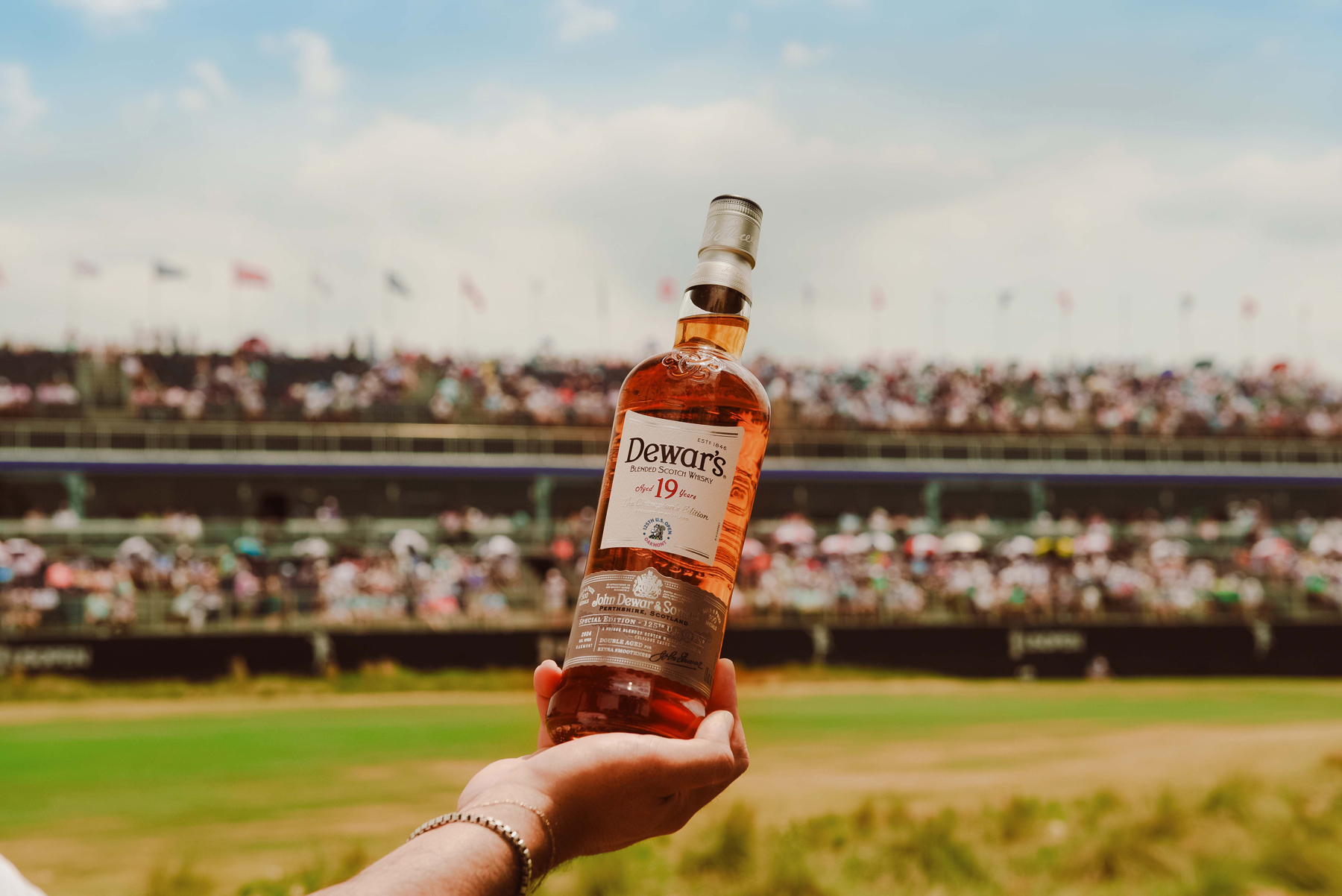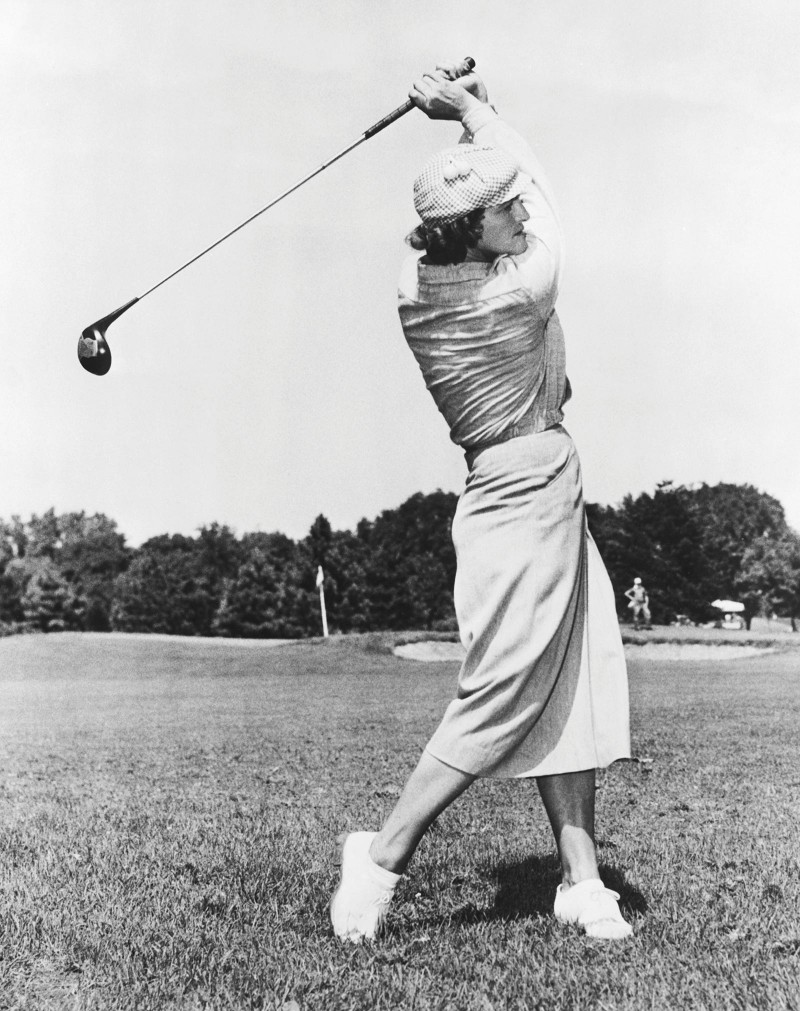

Next time you get together with your know-it-all sports trivia friends, ask them this: How many female Major winners were there by the end of the LPGA’s inaugural year? It was 1950 and there were three Majors on the calendar, so the answer would seem to be one, two or three. But the correct answer is 14.
That’s because two of the three Majors had been retroactively designated as such (the Western Women’s Open, which debuted in 1930, and the Titleholders Championship, which launched in 1937). This immediately established the likes of Patty Berg, Louise Suggs, Helen Dettweiler and others as Major winners, despite the fact that none of them won a Major in 1950, the LPGA’s first year of existence.
That year, the legendary Babe Zaharias (featured picture) took all three Majors, adding the U.S. Women’s Open to victories at the Western and the Titleholders events and becoming the first female player ever to win a Grand Slam. Only one other player would accomplish this feat—Sandra Haynie, who had an easier task of it in 1974, one of ten years during which there were only two Majors: the U.S. Women’s Open and the LPGA Championship.
At various points since 1950, there have been two Majors per year (1968-1978), three Majors per year (1950-1954; 1967; 1972; 1979-1982), four Majors per year (1955-1966; 1983-2012) and five Majors per year (2013-present).
The Western and Titleholders events were gone by the late 1970s, eventually replaced by the du Maurier Classic and the Kraft Nabisco Championship. But the du Maurier lost its sponsor, a tobacco company, in 2001 and was itself replaced by the Women’s British Open, now a Ricoh event, formerly sponsored by Weetabix. Last year, in 2013, France’s Evian Championship joined the club and became the fifth Major on the LPGA Tour. That event, formerly known as the Evian Masters, is now one of two Majors sanctioned by both the LPGA and Ladies European Tour (the other is the Women’s British Open).

In all, eight different events have been regarded as LPGA Majors, and, in contrast to the men’s game, all but one of them has had a title sponsor, the consistently well-run U.S. Women’s Open being the sole exception.
The more Majors there are in a given year, the greater the chance of players amassing Major titles—but with the addition of the Evian, the prospect of a third Grand Slam occurring is increasingly dim.
Kathy Whitworth came closest to being the third in 1967, a “three Major” year, when she took both the PGA Championship and Western Open but missed out on the U.S. Women’s Open. Similarly, two more came close in “four Major” years: LPGA Hall-of-Famer Mickey Wright in 1961 and Pat Bradley in 1986, each missing by one victory.
But what of the “Majors victories” total, a standard by which the greatest in the game are often measured? In the case of women’s golf, trying to establish a “best ever” ranking is mind-twisting indeed.
Consider: Patty Berg currently leads the LPGA’s list of all-time Major wins with 15, but eight of those are retroactively counted among Women’s Western Open and Titleholders victories prior to 1950. Subtract the retroactive tournaments from her Majors’ total, and that of Louise Suggs (11 wins), and suddenly Wright becomes the all-time women’s Majors leader with 13 and Annika Sorenstam, currently tied for fourth with Zaharias on 10 Major victories, moves into second place. Further complicating matters is how various tournaments have been regarded as they transformed into Majors.

The Women’s British Open was long considered a Major before its official LPGA designation as such in 2001, but the two Hall of Fame points that Laura Davies’ 1986 victory would have earned her don’t count and to this day the Englishwoman remains outside looking in.
Entertainer Dinah Shore helped to launch the Kraft Nabisco Championship in 1972 as the Colgate-Dinah Shore Classic. Its large purse and high profile had many immediately considering it as a Major, but it didn’t receive Major status until 1983. On the other hand, the du Maurier (then Peter Jackson, now Canadian Open) was added to the LPGA’s schedule in 1973 but didn’t appear to hold any particularly elevated status with the public. Despite that, it was designated a Major in 1979, four years before Dinah Shore’s tournament.

Had the Kraft Nabisco’s victors prior to 1983 been awarded retroactive Major victories, the record books would look quite different: Judy Rankin, Jane Blalock and Jo Ann Prentice all won the tournament, but have no Major wins on their records. Sandra Post, the first Canadian on the LPGA Tour, won back-to-back titles there in 1978 and ’79, which would have put her Majors’ total at three (having won the LPGA Championship in her rookie year, 1968).
Likewise, World Golf Hall-of-Famer Nancy Lopez is only considered to have won one Major, the LPGA Championship (albeit three times: 1978, ’85, ’89). But she took the Kraft Nabisco in 1981, shortly before it became a Major. Sally Little, the last woman to win the tourney as a non-Major in 1982, has two other Major victories on her record (the 1980 LPGA Championship and the ’88 du Maurier Classic). Lastly, a semi-retired Wright took it in 1973, a fantastic victory in any case which would have boosted her all-time Majors total to 14.
So, given changing schedules and sponsors, wildly varying numbers and a history of organizational dynamism, who’s the LPGA’s greatest of all time? If Major wins are anything to go by, we have no idea.
Founded by Dinah Shore in 1972, the Kraft Nabisco Championship in April kicks off the LPGA’s Majors’ season and is accompanied by a series of parties and celebrations in the Rancho Mirage area of California, which certainly add to its festive reputation. That reputation was further cemented in 1988 when the tournament acquired its own winner’s tradition: a jump into a lake. Amy Alcott was the first to dive into Champions Lake (aka “Poppie’s Pond,” named for former tournament director Terry “Poppie” Wilcox), which surrounds the 18th green at Mission Hills Country Club, the tournament’s venue. Alcott added two more jumps to her résumé, the last coming with her third victory in 1991 and being all the more memorable because she took the then-75-year-old tournament host Dinah Shore with her into the drink. Somewhat less dynamically, 1998 winner Pat Hurst jumped in only up to her knees as she could not swim. While perhaps not as grand a tradition as offered at Augusta, the pond jump has been called “the Green Jacket of the LPGA” and is indicative of the event’s enthusiastic spirit.
Follow Us On


| Cookie | Duration | Description |
|---|---|---|
| cookielawinfo-checkbox-analytics | 11 months | This cookie is set by GDPR Cookie Consent plugin. The cookie is used to store the user consent for the cookies in the category "Analytics". |
| cookielawinfo-checkbox-functional | 11 months | The cookie is set by GDPR cookie consent to record the user consent for the cookies in the category "Functional". |
| cookielawinfo-checkbox-necessary | 11 months | This cookie is set by GDPR Cookie Consent plugin. The cookies is used to store the user consent for the cookies in the category "Necessary". |
| cookielawinfo-checkbox-others | 11 months | This cookie is set by GDPR Cookie Consent plugin. The cookie is used to store the user consent for the cookies in the category "Other. |
| cookielawinfo-checkbox-performance | 11 months | This cookie is set by GDPR Cookie Consent plugin. The cookie is used to store the user consent for the cookies in the category "Performance". |
| viewed_cookie_policy | 11 months | The cookie is set by the GDPR Cookie Consent plugin and is used to store whether or not user has consented to the use of cookies. It does not store any personal data. |